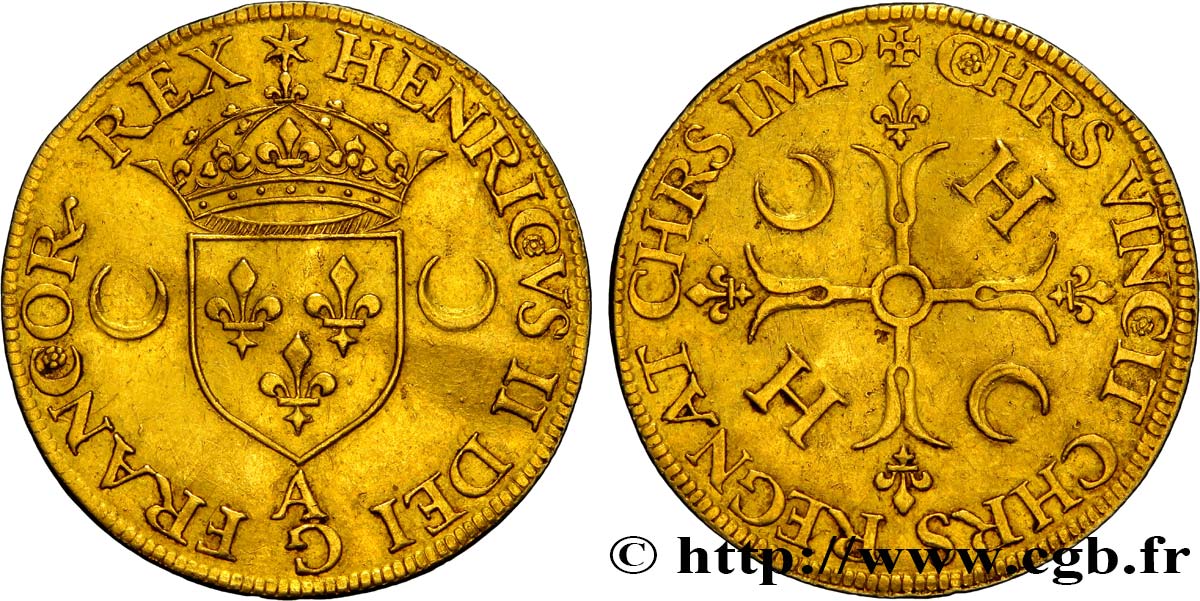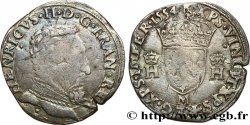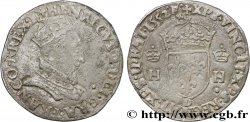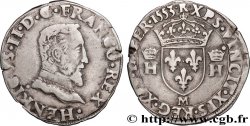Live auction - bry_399791 - HENRY II Écu d’or dit “aux croissants” n.d. Paris
You must signin and be an approved bidder to bid, LOGIN TO BID. Accounts are subject to approval and the approval process takes place within 48 hours. Do not wait until the day a sale closes to register. Clicking on "BID" constitutes acceptance of the terms of use of cgb.fr private live auctions.
Bids must be placed in whole Euro amounts only. The sale will start closing at the time stated on the item description; any bids received at the site after the closing time will not be executed. Transmission times may vary and bids could be rejected if you wait until the last second. For further information check the Live auction FAQ
All winning bids are subject to a 18% buyer’s fee.
All winning bids are subject to a 18% buyer’s fee.
| Estimate : | 12 000 € |
| Price : | 7 977 € |
| Maximum bid : | 7 977 € |
| End of the sale : | 27 September 2016 16:07:18 |
| bidders : | 4 bidders |
Type : Écu d’or dit “aux croissants”
Date: n.d.
Mint name / Town : Paris
Metal : gold
Millesimal fineness : 958 ‰
Diameter : 25 mm
Orientation dies : 12 h.
Weight : 3,37 g.
Rarity : R3
Coments on the condition:
Cet écu est frappé sur un flan large et régulier. Flan légèrement voilé
Catalogue references :
Predigree :
Exemplaire provenant de la collection L.G.
Obverse
Obverse legend : (SOLEIL) HENRICVS II DEI G FRANCOR REX, (ROSE DANS LES C).
Obverse description : Écu de France couronné, accosté de deux croissants ; au-dessous un A.
Obverse translation : (Henri II, par la grâce de Dieu, roi des Francs).
Reverse
Reverse legend : + CHRS VINCIT CHRS REGNAT CHRS IMP, (ROSE DANS LES DEUX PREMIERS C).
Reverse description : Croix fleuronnée et fleurdelisée cantonnée aux 1 et 4 d’un croissant, aux 2 et 3 d’une H.
Reverse translation : (Pour qu'il remplisse l'Univers).
Commentary
L’une des monnaies les plus rares de la Renaissance française issue des premières frappes selon le procédé du moulin installé à Paris au moulin dit “des étuves” qui était située sur la Seine, en face de l’ancienne Monnaie qui se trouvait sous l’actuelle Samaritaine. Cette monnaie sans millésime a été frappée en 1552, suite à l’importation du procédé du balancier importé depuis Augsbourg par l’ambassadeur de Marillac. Les exemplaires sans millésime, d’après le FRANCIÆ IV, ne sont connus que par deux exemplaires, dont un écu est conservé dans les médailliers de la ville de Poitiers et l’autre découverte dans le trésor monétaire de Bunschoten (Pays-Bas publié par Enno van Gelder en 1960). Ces monnaies sans millésime ont été un temps considérées comme des essais.
One of the rarest coins of the French Renaissance, from the first strikes using the mill process installed in Paris at the mill called “des étuves” which was located on the Seine, opposite the old Mint which was located under the current Samaritaine. This coin without a date was struck in 1552, following the importation of the pendulum process imported from Augsburg by the ambassador de Marillac. The examples without a date, according to the FRANCIÆ IV, are known from only two examples, one of which is preserved in the medal cabinets of the city of Poitiers and the other discovered in the monetary treasure of Bunschoten (Netherlands published by Enno van Gelder in 1960). These coins without a date were once considered as tests
One of the rarest coins of the French Renaissance, from the first strikes using the mill process installed in Paris at the mill called “des étuves” which was located on the Seine, opposite the old Mint which was located under the current Samaritaine. This coin without a date was struck in 1552, following the importation of the pendulum process imported from Augsburg by the ambassador de Marillac. The examples without a date, according to the FRANCIÆ IV, are known from only two examples, one of which is preserved in the medal cabinets of the city of Poitiers and the other discovered in the monetary treasure of Bunschoten (Netherlands published by Enno van Gelder in 1960). These coins without a date were once considered as tests








 Report a mistake
Report a mistake Print the page
Print the page Share my selection
Share my selection Ask a question
Ask a question Consign / sell
Consign / sell
 Full data
Full data









